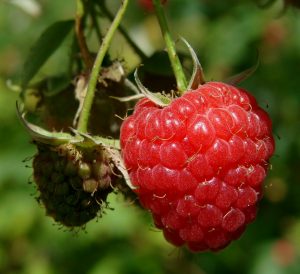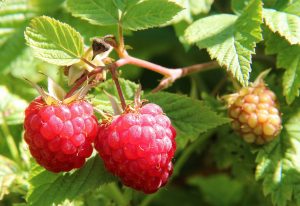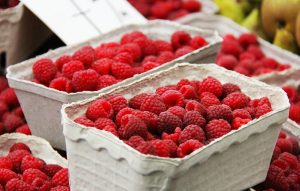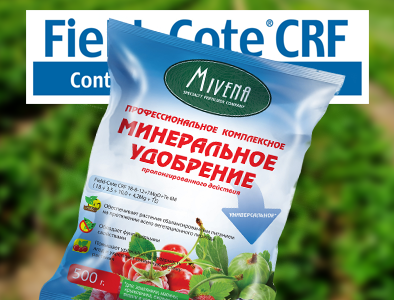How to succeed when collecting raspberries, also after harvesting.
ESPECIALLY BERRIES

Raspberry (Rubus idaeus l.) belongs to the family Rosaceae, the fruit is a drupe of the team. Berry depends on climatic conditions, in this regard, the berries should be collected directly by the time of maturation. Raspberry has a high rate of absorption of air and is a perishable product. The main reasons for the deterioration in qualities of the berries are dehydration, loss of elasticity, loss of appearance, and loss of tactile qualities. It is therefore necessary to take these aspects into account with the purpose of preserving its useful qualities and organoleptic characteristics at the time of collecting berries.
On sale, both fresh and frozen. When consuming fresh raspberries should be stored at a temperature of 0°C if you plan to store in frozen raspberries stored at -20°C.
The quality of the berries
Berries, planned for fresh consumption must meet certain quality standards defined in raspberries number of factors that can be grouped by visual inspection for organoleptic quality and nutritional qualities.
Quality, by visual inspection, is determined by the appearance of the berries, in raspberries which is determined when the fruit has a color from uniformly red to dark, without any white or green spots; the template size of the fruit more than 8 mm, the berries should have a conical shape, enough toughness, and not be dehydrated.

Thus, all pre-harvest and post-harvest operations should be focused on maintaining this quality throughout the sales period.
HARVEST AND POST-HARVEST MANIPULATION
The harvest
Indicator for harvest is the surface color of the berries, it should be close to red. In addition, total acidity and soluble dry substances should be taken into account, because these settings cannot be changed after collection. Raspberry, approached the period of maturity, is easily separated from the stalk, should have a bright color and appropriate hardness, in the presence of the softened berries, it should be removed. Harvesting should be done consistently throughout the area of the garden.

The success of this work will depend on optimally designed process, properly trained personnel to perform this work the speed of execution of work to avoid deterioration of fruit quality and store berries in proper conditions. There are several important aspects to be taken into consideration:
- The Assembly must be performed with great care, trying not to damage the fruit, without squeezing or dropping them.
- The Assembly must be performed individually and immediately put in the tank or tray.
- Collection you need to perform by sector and by grade, to avoid mixing varieties to reduce the heterogeneity in the process of packing.
- You need hygiene in the process of working with berries, collectors must have clean hands, nails should be cut, trays or cages to collect the harvest must be clean.
- The collection is necessary to make early in the morning to avoid high temperatures.
- In the presence of dew, rain, or moisture on the berries, picking produce.
- You need to apply shading to the fields in order to avoid podpisania berries in the sun.
- Selection of berries

The selection can also be made at the time of receipt of berries for packaging, the same above-mentioned aspects, such as hygiene, hand washing, careful cleaning and disinfection of the lines of selection should be taken into account. Chlorination should be carried out to kill bacteria and fungi, as well as to avoid hot spots'.
Transportation of berries
Transport to the packing line should be implemented as soon as possible for lowering the temperature field, and must be performed carefully to avoid the formation of notches on the berries. It is also necessary to avoid contamination of berries dust particles or foreign materials at the time of transporting berries from the field to the packing line, one of the ways to avoid this moment, for example, serves as watering roads to prevent dust generation and contamination of berries.
Packing berries and shipment to the markets
The packing stage of berries should be carried out at a temperature not exceeding 4°C, avoid temperatures more than announced, to avoid deterioration of qualities of the berries. The time elapsed between harvesting, sale or transportation should be minimal so that the berry is made up of different markets in optimal condition; therefore, in our situation, the task that requires effort is the delivery of a quality product on the market, as the main consumer markets are far away (USA, Europe) thus, the berries should retain their integrity and quality during this period.
POST-HARVEST FACTORS
 In view of the rapid metabolism of raspberry, the temperature must be quickly lowered. The cooling is done using air injected into a pre-chilled chamber, for the purpose of lowering the temperature field in the shortest possible time. Berries for fresh consumption should be stored at 0°C for a short time period should not exceed 5 days due to increased risk of deterioration.
In view of the rapid metabolism of raspberry, the temperature must be quickly lowered. The cooling is done using air injected into a pre-chilled chamber, for the purpose of lowering the temperature field in the shortest possible time. Berries for fresh consumption should be stored at 0°C for a short time period should not exceed 5 days due to increased risk of deterioration.
You must avoid too much lower temperatures (less than -1°C) to avoid hypothermia. In addition to dry the berries exposed to the charge air cooler, to avoid dehydration. There is another important factor you need to avoid a rise in temperature to avoid condensation on the berries, which can cause significant deterioration of the berries in connection with the start of decay processes. The relative humidity shall exceed 90%, in order to avoid or reduce dehydration of the berries in storage chambers.
Respiratory rate and ethylene norm

The use of controlled and modified gaseous environment
In addition to the use of low temperatures, applicable to raspberries and other tools that are used after harvest to prolong the life cycle, such as the use of modified gaseous environment, as well as controlled. This condition consists of the transformation of gases, mainly O2 and CO2 during storage and transportation of berries, reducing O2 and increasing CO2 levels. The main effect of these technologies lies in the physiology of the berries, lowering their metabolism, in addition to the fact that CO2 concentrations in excess of 15%, have a fungistatic action. Among the potential advantages of these technologies is a reduction in dewatering (modified, mainly), and slow the development of rot, with proper application of technology, contributing to the maintenance of quality.
Dehydration and weight loss berries
Raspberries are very susceptible to dehydration due to the higher surface area and the lack of a protective cuticle, resistant to moisture loss. The symptoms of dehydration manifest as wrinkling of the berries due to loss of elasticity and decrease the brightness.
Watery berries
This is manifested in the presence of some watery texture that may be associated with the use of doses of controlled or modified gaseous environment in excess of the recommended norms.
Depigmentation of berries due to CO2
This problem is evident in the red varieties during storage in controlled or modified gaseous environment with a high concentration of CO2, which is more than 20-25%, in connection with this depigmentation occurs in the berries and can develop odors along with the softening and watery.
DISEASES AFTER HARVEST











